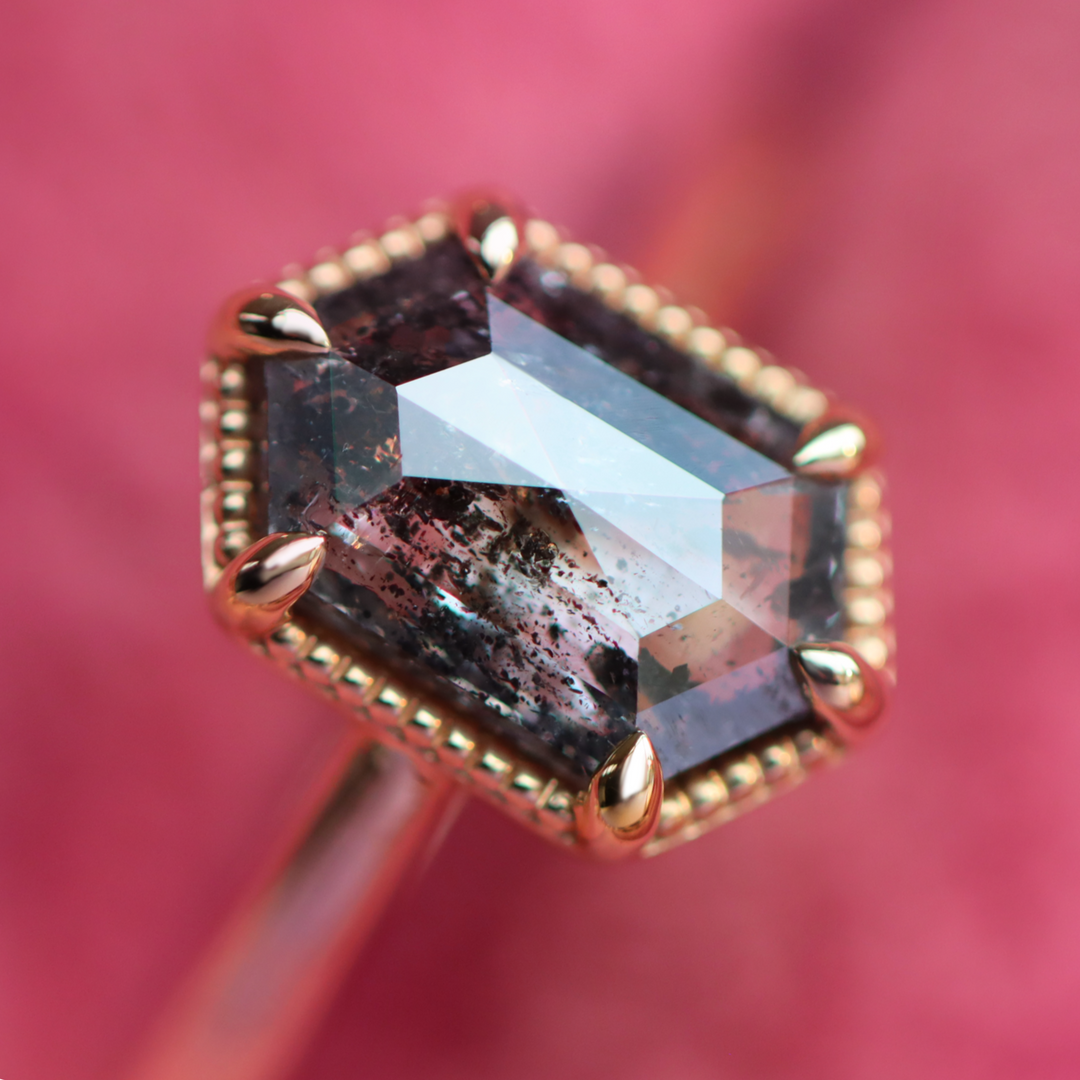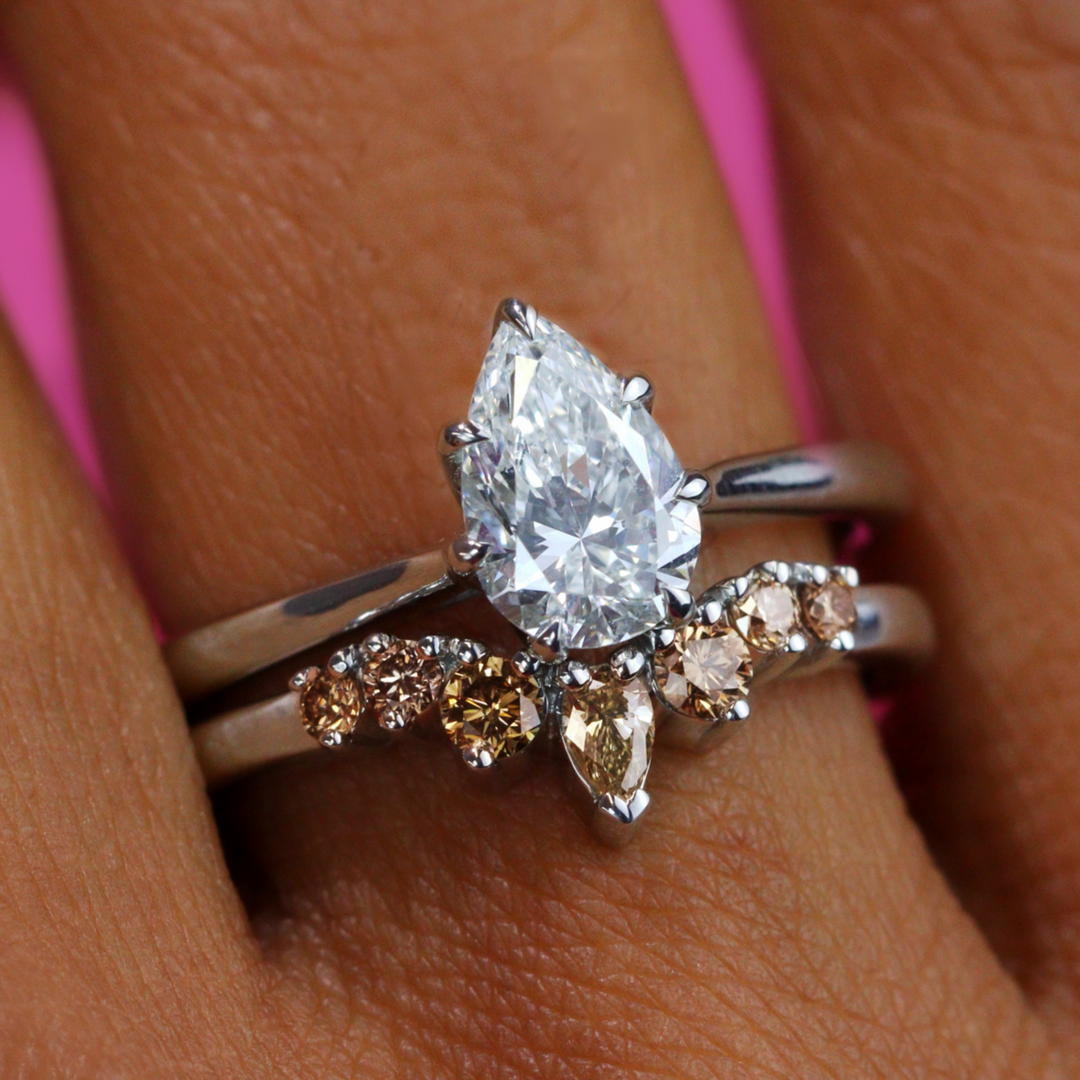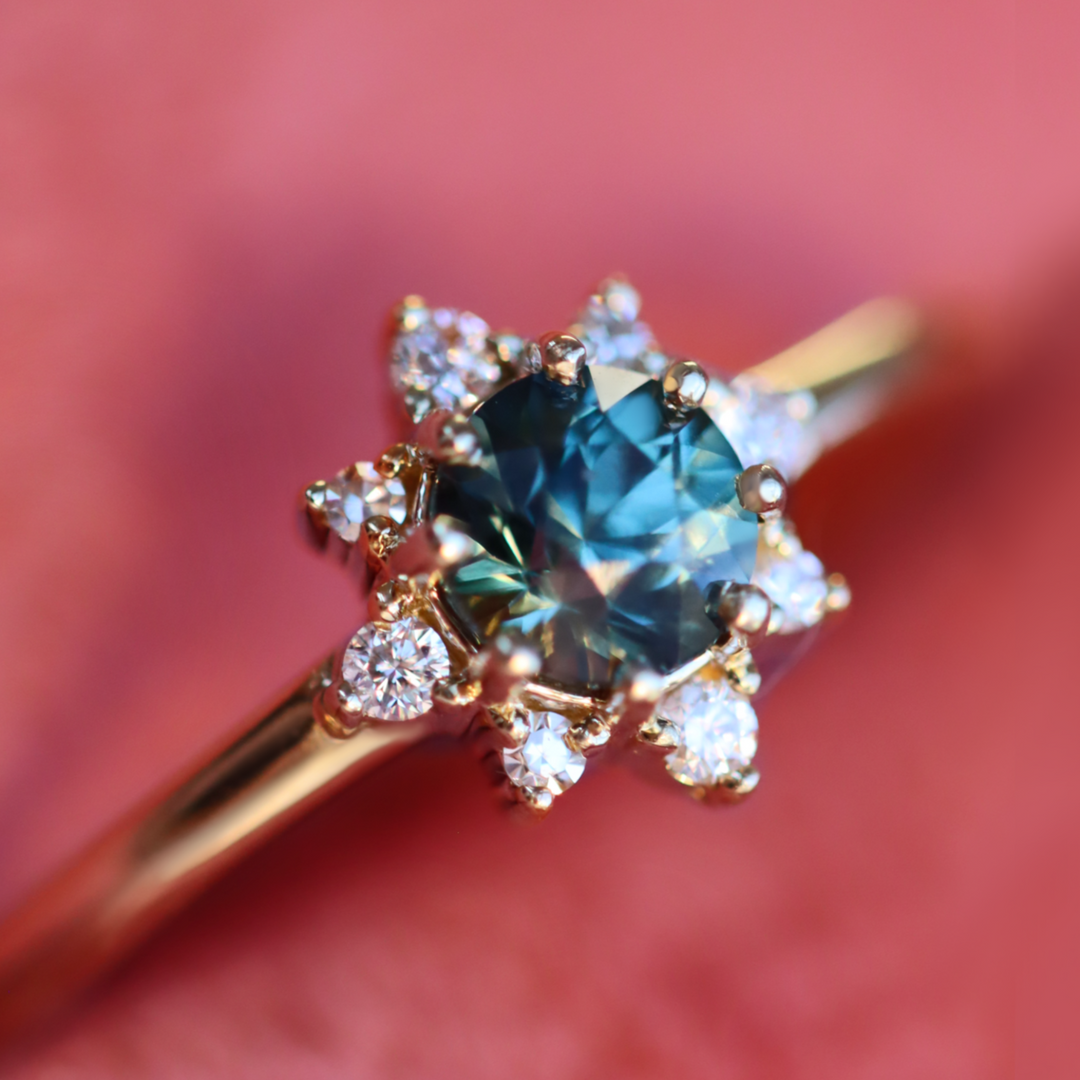THE FUTURE OF WEDDING RINGS IS INSPIRED BY THE PAST
Wedding rings tend to take a back seat to the often scene-stealing engagement ring but they should not be overlooked. Your wedding ring will be the only part of your actual wedding day that you’ll look at for a very long time so you never want to get tired of adoring it.
The idea of forever brings about thoughts of timelessness as well as the future. With these small bands of metal symbolising centuries of tradition alongside a personal emotional significance, it’s no wonder wedding ring designs popular today are often inspired by the past.
We've looked back through the ages at various wedding band trends to see where certain design elements have come from and why they will remain popular for years to come.

BACK TO THE BEGINNING
HOW IT ALL BEGAN
Wedding rings can be traced back to Ancient Egyptians who exchanged rings made from braided reeds and hemp. This is also where the tradition of wearing your wedding band on the fourth finger of your left hand originated. It was believed that a ‘vein of love’ ran from this finger directly to your heart. This, alongside Egyptians seeing the circular ring shape as a symbol of an endless promise, resulted in commitment rings.
Ancient Greeks and Romans also wore rings. These were made from leather, bone or ivory before developing into more modern metal and iron wedding bands. For those wealthy enough, it was also the start of gold and silver bands being used.

SUBTLE YET STYLISH
RIBBON TWIST
Initially, wedding rings were only worn by wives; it didn’t become popular for husbands to wear them until the 20th century. From the 15th-17th century ‘Gimmel Rings’ were used. These were made up of 2 to 3 interlocking bands that when worn together would create a whole ring. The bride and groom would each wear a band on the lead up to the day, then at the wedding they would be worn as one by the bride to signify the union.
Not only has this design element of stacking rings influenced the way people wear their rings today but the twisted together element has contributed to modern styles, like our Dee Ribbon Twist design.

MAKE IT PERSONAL
ENGRAVING
After plain wedding bands, the next most popular style is a patterned or engraved band. Around the 15th century, during the Renaissance, came the ‘Posey Ring’. These were inscribed, usually on the inside in order to be close to the wearer, with a poem or ‘posey’. Engraving remains a prominent trend today and a service that we provide!

OOZING OPULENCE AND GLAMOUR
GEM-SET
Believe it or not, it was the Victorian era, between 1835-1900, that popularised the use of diamonds in wedding rings. Rows, halos and clusters were the trend of this period, marquise shapes were also popular, either as a gemstone or in the overall design. Our Winnie tiara ring is a perfect example of a Victorian-style marquise diamond wedding ring brought up to date by its signature curve. These shaped to fit designs are lusted after today in order to complement and complete a bridal set similar to those worn by Hailey Bieber and Natalie Portman.
Since the 1980’s, gem set rings have increased in popularity, with diamonds by far the most favoured. Many gem-set wedding rings have a small number of widely separated diamonds like Penelope that pulls inspiration from this era as well as Edwardian engraving. Celebrities including Reese Witherspoon, Nikki Hilton and Sophie Turner have chosen rings with a full circle of diamonds - previously known more as an ‘Eternity Ring’. If you do want stones - bezel or flush settings offer the most protection.

PRETTY, DAINTY AND INTRICATE
PATTERNED
During the Edwardian era, 1900-1920, intricate filigree metal work grew in popularity. Floral motifs, spirals, circles, unity and eternity were all main themes that are still inspiring wedding bands today through hidden diamonds, detailed gallery settings and surface patterns. Heavily patterned rings had a resurgence in the 1970s and early 1980s but these have now made way for narrower, lighter versions. Bethan, Flora and Quinn are good examples of this trend.

ONE INSPIRATIONAL ERA
ART-DECO
2020 marked the 100th anniversary of Art Deco, one of the most influential style periods in the history of jewellery. This era continues to contribute and inspire jewellery styles, particularly wedding bands, to this day. In contrast to the lacy lightness of Edwardian styles, Art Deco is more about bold geometry and repeating patterns. Instead of curvy, flowing filigree - Art Deco rings include metalwork with repeating, sharp angles and tiny beads known as milgrain. Prior to today the 1970’s bold disco styles incorporated geometric designs. Elena and Annie are two of our Art Deco inspired bands.
No matter what your wedding ring of choice may be, it will more than likely have design elements rooted in the past. There’s something about these timeless pieces, ones that will never go out of style to further solidify a commitment like marriage.
READY TO DIVE IN?




